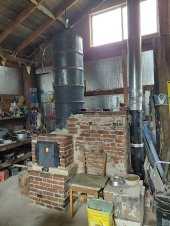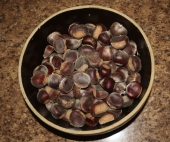Hi all,
I seek others who are interested in establishing and running a mixed tree crop orchard in Colrain, Massachusetts together, using organic or regenerative methods.
I hope we will assemble a crew of competent orchardists that functions well together to manage orchard land in the Southeast part of the town of Colrain, in Western Massachusetts, USA. The crew would earn revenue from the orchard’s operation, after an orchard establishment period. Bank financing would enable pay during orchard establishment. A focus of the orchard business planning is assuring banks that they will be paid back, to ensure bank loans.
We could each specialize in a set of tree/perennial crops, thus complementing each other in managing this orchard well as a team. we might interplant shorter-lifespan crops between gradually-maturing tree crops: Strawberries, low-bush blueberries, bush cherries, christmas trees, hops vines, peaches and the like. These would bring in revenue before the main trees bear crops. I also aspire to inoculate planted tree crops with edible and/or useful mycorrhizal fungi, to benefit plants while yielding additional mushroom harvests.
I imagine a pick-your-own orchard that also functions to research and demonstrate methods, educating the public as well as other orchardists and potential orchardists about best practices, and working with nearby researchers of the University of Massachusetts Amherst to document successes and failures.
Here are a few possible sites:
- On some part of a 25 acre common lot, shared by Van Nuys Road lessees leasing from the Valley Community Land Trust (VCLT). I have a third interest in this common lot’s lease.
- On neighbors’ adjacent land to the north, next to the VCLT Van Nuys common lot – this neighbor has expressed interest.
- On almost-adjacent VCLT common land associated with a different set of lessees, on Shelburne Line Road - Some interest by one of those lessees has been expressed.
- On the land between the two VCLT common lots. These ~25 steep wooded acres are owned by a farming neighbor who raises cattle, which might graze beneath an orchard.
- On nearby land of a 160 acre farm, planned to be purchased by the VCLT in the next years.
I lease a VCLT houselot west of Van Nuys road, and, as part of this, share a third of a lease on a 25 acre common lot. As background, there are 3 two-acre individual houselot leaseholds on Van Nuys Road, as well as 25 unbuildable acres that are shared in common by the three lessees of the Van Nuys house lots. The land owner; Valley Community Land Tust - exists to steward land, and hold land apart from the speculative market, owned by the community; and to lease this land long-term; i.e. 99 year leases. The 25 acre VCLT Van Nuys common lot includes an aged sugar bush, some power line land, and much 'feral'/2nd growth forest with hickory, hemlock and such.
I built a greenhouse and toolshed on my leasehold’s two acres, am building an outdoor oven now, and plan to build a house there next year. I have about 85 2nd year chestnut seedlings potted now in the greenhouse, and am starting more. Forest crops, mycoforestry, perennial intercrops, nitrogen-fixing companions, and both groundcovers and overstory species interest me.
If these plans interest you, please send your resume and a letter describing the role you hope to fill, and the work you would like to do, to:
Brian413cady@proton.me
Here's my resume:
https://drive.proton.me/urls/8JF83M458R#4RdvHnktZpOY







